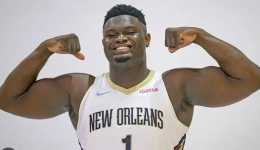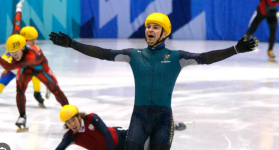Navigation
Install the app
How to install the app on iOS
Follow along with the video below to see how to install our site as a web app on your home screen.
Note: This feature may not be available in some browsers.
More options
Style variation
You are using an out of date browser. It may not display this or other websites correctly.
You should upgrade or use an alternative browser.
You should upgrade or use an alternative browser.
Paris Olympics: 26 July 2024 – Sun, 11 Aug 2024
- Thread starter tiger_one
- Start date
Would have been better than Pat Mullins...I thought C
Surely Jonah from Tonga should have been in your team.
What bet that Dr Gunn is nominated for an Australia Day awatd?
In fairness to Dr Gunn - this is the flawed process by which she was selected...
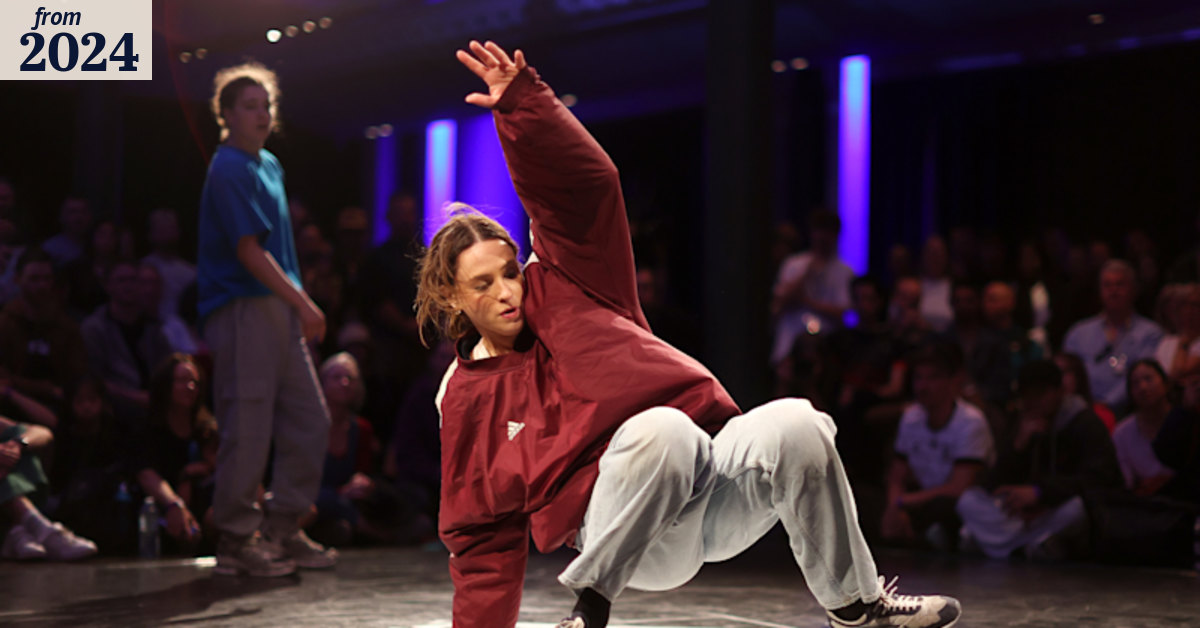
 www.smh.com.au
www.smh.com.au
Rachael Gunn was not expected to make headlines at the Olympics, but now, under her b-girl moniker Raygun, she has easily become one of the most talked about – and divisive – athletes of the Paris Games. Her kangaroo-inspired breaking moves, unique floor work, patriotic tracksuit, and the way she crashed out of the competition have been shared across millions of group chats and social feeds all over the world.
In Australia, some have asked how the 36-year-old Macquarie University academic was selected for the Games, and there are suggestions that perhaps she unfairly took the spot away from some up-and-coming talent.
In an interview with this masthead before heading to Paris, Gunn laid out the selection process. “I won the Oceania qualifier, and by winning that competition, I got the direct spot to Paris,” she said. “That was a really intense, really stressful but really amazing competition.”
But the inner workings of Australia’s breaking community, the selection process itself and the fact Australia could have taken up to four competitors are little known. Here’s the backstory of how Raygun became a global sensation.
After confirmation of breaking’s Olympic status came in December 2020, the ABA announced it would begin taking registrations for dancers wanting to be considered for selection. Napalan and the ABA began hosting breaking competitions and introduced a national ranking system to help scout for talent.
In 2021, the first year that rankings had been introduced, Gunn was ranked first out of 26 registered women.
The World Dance Sport Federation (WDSF) published its qualification system in April 2022, which included three qualification events for Australians: the WDSF World Championships, the Oceania Championships and the Olympic Qualifier Series. Up to two men and two women could be selected to represent Australia in the Games.
The ABA, now known as Ausbreaking, chose two Australian women to compete at the first qualifier: the World Championships in Belgium in September last year. Gunn, who had ranked first in 2021 and second in 2022 and 2023, was sent to Belgium along with Molly Chapman, who had ranked second in 2021, first in 2022, and fourth in 2023.
The winner would automatically qualify for Paris. Chapman finished in 79th place out of 80 entrants, and Gunn finished in 64th, meaning neither qualified.
The competition featured a 10-judge panel of professional breakers, including judges from Japan and South Korea. There were 37 male and 15 female entrants.
On the first day of the competition, Gunn walked away as the highest-scoring woman as the pool was reduced to a final eight competitors.
On day two, Gunn defeated three competitors, including Chapman, in the last round to win and qualify for the Olympics.
The final opportunity to qualify for Paris was the Olympic qualifier series held in Shanghai and Budapest earlier this year. Three Australian women competed, including Chapman, but none qualified.
Lucas Marie, a breaker on the Ausbreaking selection committee, said the small pool of breakers participating in qualifiers reflected the size of the current scene and the resources that Ausbreaking had to reach new dancers.
“There would be nothing exclusive that I can think of about those events that isn’t open to the best dancers from across Australia and New Zealand”, he said.
“However, I would say that Ausbreaking is not well funded by the government. There’s been really little funding for us to enable diverse communities to participate. Of course, there’s kids who maybe didn’t know it was on or maybe didn’t travel.
“Ausbreaking is literally community-run by Lowe [Napalan]; he has a full-time job [and] this isn’t something that he can do alone.”
Gunn, at least, is very aware of her fortune in being able to qualify, telling this masthead before the Games: “I’m so lucky to have this opportunity honestly – lucky to be at this point in my career in breaking, lucky that we got an Oceania qualifier, lucky that it gets to be in Paris.”
FYI @Demps

STAY EDUCATED GOOD PEOPLE!!

The inside story of how Raygun broke into the Olympics
Her performance divided the globe, and had many Australians wondering how she had qualified. This is how a 36-year-old academic was chosen for the Paris Games.
Rachael Gunn was not expected to make headlines at the Olympics, but now, under her b-girl moniker Raygun, she has easily become one of the most talked about – and divisive – athletes of the Paris Games. Her kangaroo-inspired breaking moves, unique floor work, patriotic tracksuit, and the way she crashed out of the competition have been shared across millions of group chats and social feeds all over the world.
In Australia, some have asked how the 36-year-old Macquarie University academic was selected for the Games, and there are suggestions that perhaps she unfairly took the spot away from some up-and-coming talent.
In an interview with this masthead before heading to Paris, Gunn laid out the selection process. “I won the Oceania qualifier, and by winning that competition, I got the direct spot to Paris,” she said. “That was a really intense, really stressful but really amazing competition.”
But the inner workings of Australia’s breaking community, the selection process itself and the fact Australia could have taken up to four competitors are little known. Here’s the backstory of how Raygun became a global sensation.
Who runs breaking in Australia?
The journey to qualification began in 2019 when the Australian Breaking Association (ABA) was founded by two-time Australian-Oceania Battle of the Year champion Lowe Napalan. There was a buzz in the breaking world that it could be announced as an official Olympic sport. Without an established national body to nominate an Olympic team, Napalan registered the ABA as a charity and selected a group of veteran Australian breakers to lead it.After confirmation of breaking’s Olympic status came in December 2020, the ABA announced it would begin taking registrations for dancers wanting to be considered for selection. Napalan and the ABA began hosting breaking competitions and introduced a national ranking system to help scout for talent.
In 2021, the first year that rankings had been introduced, Gunn was ranked first out of 26 registered women.
Who got to go to Paris?
The World Dance Sport Federation (WDSF) published its qualification system in April 2022, which included three qualification events for Australians: the WDSF World Championships, the Oceania Championships and the Olympic Qualifier Series. Up to two men and two women could be selected to represent Australia in the Games.
The ABA, now known as Ausbreaking, chose two Australian women to compete at the first qualifier: the World Championships in Belgium in September last year. Gunn, who had ranked first in 2021 and second in 2022 and 2023, was sent to Belgium along with Molly Chapman, who had ranked second in 2021, first in 2022, and fourth in 2023.
The winner would automatically qualify for Paris. Chapman finished in 79th place out of 80 entrants, and Gunn finished in 64th, meaning neither qualified.
How was Gunn selected?
The next possible opportunity for Australians to qualify for breaking would be to win the WDSF Oceania Championships held at Sydney’s Town Hall that October. Registration was open to the public to anyone eligible to compete in the Olympics, regardless of Australian rankings.The competition featured a 10-judge panel of professional breakers, including judges from Japan and South Korea. There were 37 male and 15 female entrants.
On the first day of the competition, Gunn walked away as the highest-scoring woman as the pool was reduced to a final eight competitors.
On day two, Gunn defeated three competitors, including Chapman, in the last round to win and qualify for the Olympics.
The final opportunity to qualify for Paris was the Olympic qualifier series held in Shanghai and Budapest earlier this year. Three Australian women competed, including Chapman, but none qualified.
What do breakers think of this process?
Breakers this masthead has spoken to expressed a lack of interest in the sport’s place at the Olympics. Most did not want to speak publicly to avoid being seen as critical of the sport or of Raygun, but one of Australia’s current top-10 female breakers said they weren’t a fan of the current selection process. However, they still expressed support for Gunn.Lucas Marie, a breaker on the Ausbreaking selection committee, said the small pool of breakers participating in qualifiers reflected the size of the current scene and the resources that Ausbreaking had to reach new dancers.
“There would be nothing exclusive that I can think of about those events that isn’t open to the best dancers from across Australia and New Zealand”, he said.
“However, I would say that Ausbreaking is not well funded by the government. There’s been really little funding for us to enable diverse communities to participate. Of course, there’s kids who maybe didn’t know it was on or maybe didn’t travel.
“Ausbreaking is literally community-run by Lowe [Napalan]; he has a full-time job [and] this isn’t something that he can do alone.”
Gunn, at least, is very aware of her fortune in being able to qualify, telling this masthead before the Games: “I’m so lucky to have this opportunity honestly – lucky to be at this point in my career in breaking, lucky that we got an Oceania qualifier, lucky that it gets to be in Paris.”
FYI @Demps

STAY EDUCATED GOOD PEOPLE!!
And for those who say breaking should not be in the Olympics....
GUESS WHAT??
The true hip hop community agrees AND declined the unsolicited invitation!!
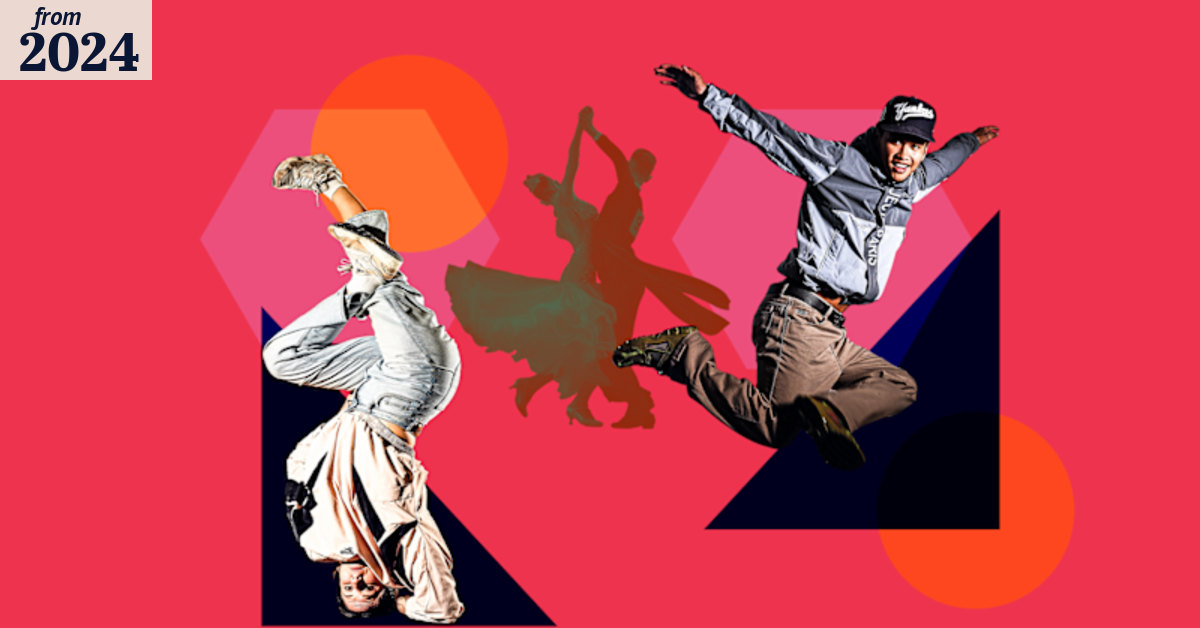
 www.smh.com.au
www.smh.com.au
Breaking is an art that grew on the street. It’s about underground dance battles and wild creativity and people who feel like outsiders. It’s still scarred by the mainstream belief that it’s a “stale joke from the ’80s”. It’s the antithesis of everything the Olympics is about.
And yet, without its consent or knowledge, breaking was co-opted into the Olympics almost by accident.
When a decades-long campaign by the World Dance Sport Federation (WDSF) to get ballroom dancing into the Games kept failing because it was too “outdated”, the WDSF served up breaking as a youthful alternative. But no one asked the breakers. Some fought the Olympification of their art, others were persuaded by what the Games could do for it. Their views were moot. The Olympic movement is so big, it mows down everything in its path.
Suddenly, b-boys and b-girls were scrambling to set up qualifiers and federations. In Australia, accomplished breakers had to become sporting officials. While Olympic breaker Rachael Gunn, PhD, became an athlete, her breaker husband became a coach. Another top dancer, Lowe Naplan, became an administrator. “The only reason I did it was because no one else would do it,” he said. “I never really thought of [breaking] as a sport … it will always be a culture and an art form first.”
As the Paris Games draw to a close, Raygun (Gunn, 36, of Sydney) and J Attack (Jeff Dunne, 16, of northern NSW) will compete for gold in Paris. As they battle each other, there’s an undercurrent of bemusement running through a subculture that may be too cool for the Games.
At the height of disco in the 1970s, breaking grew in the disadvantaged community of New York’s Bronx. But its appropriation by the mainstream in the 1980s – think Flashdance and Electric Boogaloo – sounded its death knell, except in the hearts of the most committed hip hop artists.
The arrival of video clips such as Bomfunk MC’s Freestyler in the late 1990s led to a resurgence in Australia, mostly among marginalised communities in disadvantaged areas. Eighties veterans taught a new generation. Crews, with members specialising in windmills or head spins, would hold dance battles against their rivals. “Knowledge was kind of kept within crews,” said Gunn. “So that they could have an advantage.”
Breaking was a culture. B-boys and b-girls were artists. They didn’t think of it as a sport; they didn’t see themselves as athletes. Then the Olympics came along.
Back when breakdancing, as it was then known, had been evolving in the Bronx, ballroom dancing was trying to crack the Olympics as a dance sport (a term that also covers other dance forms such as rock’n’roll and Latin). Its biggest breakthrough came in 1997, when it was recognised as a sport by the IOC. Despite this, the campaign went nowhere.
In 2014, it was still trying. The WDSF hired Jean-Laurent Bourquin, an IOC veteran turned consultant, to lobby for it to be added to the Olympic agenda.
Yet Bourquin knew that ballroom was a hopeless case. The Olympic movement worried about losing the young people, and “we’d be coming [to it] with another outdated discipline”, he told this masthead. “[The WDSF] said, ‘It’s like figure skating, [with] nice dresses, beautiful girls.’ I thought break dancing was the only one that could be attractive from a youth perspective.” So the WDSF agreed to pivot to breaking. The only issue, says Bourquin, was that it didn’t actually speak for breaking. “I discovered that a bit too late.”
Breaking was accepted into the 2018 World Youth Games. The breaking community was blindsided. Its art had been turned into an Olympic sport without its consent.
High-profile b-boy Serouj Aprahamian created a petition accusing the WDSF of using breaking as a Trojan horse to get ballroom into the Olympics, and demanding that it leave his art alone. “This action is immoral, illogical, and insulting,” he wrote.
But Bourquin convinced other high-profile breakers to design a judging system that put the best in the world on the panel. “It’s like if in soccer you take Ronaldo, Messi as the referees for a new young youth tournament, and then people are excited because they say this is a legend of our sport,” he said. The breaking community – some of it, at least – slowly came on board. Paris organisers were keen, as breaking is popular in France. It was accepted as a sport for the 2024 Games.
The WDSF rejects the accusation that it took advantage of breaking. Tony Tilenni, the Australian vice president, described the Olympics as the pinnacle. “I thought every athlete would want that gold medal,” he said. “If you can accept that for diving, for soccer and football, why wouldn’t breakers want that as well?”
In Australia, breakers were fatalistic. “It was like, ‘Well this is in [the Olympics] now,’” Gunn said. “So we’d better make sure that we’re not being misrepresented. People were really worried about what happened in the ’80s, where the narrative kind of got carried away from what breaking was, and a lot of the culture and the history was lost. We needed to make sure that there was a seat at the table for us, even though it’s not something that we planned or necessarily dreamed of.”
In Australia, the breaking community had to scramble to comply with the rules that govern Olympic sports, such as setting up a federation. Some of the best breakers had to choose between becoming athletes and becoming officials because there was no one else to do it. Free, Gunn’s husband and coach, was one of them. “He could have gone to the Games – he’s a very high-level breaker. We have so many people who can compete, but not many people who can take these other roles.”
Some athletes have been training for the Games for most of their lives. Gunn’s Olympic journey arrived five years ago, as a curveball. Now she’s wearing green and gold, and marching in the opening ceremony.
Her Olympic journey may well be over on August 10, however, as dance sport will not feature in Los Angeles; while the French embraced it, the Americans preferred other sports such as lacrosse and squash. Its fate in Brisbane is still up in the air and may depend on how ardently the WDSF wants to push it.
Despite all the upheaval, Gunn hopes the Olympics will be good for breaking. She hopes Australia, which still bans breaking in primary schools, will see how street dance is embraced in Europe, and parts of Asia. She hopes it will inspire a new generation. “So many people don’t know anything about it. [They think] it’s this stale joke from the ’80s.”
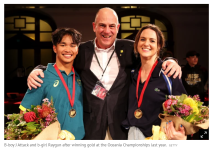
GUESS WHAT??
The true hip hop community agrees AND declined the unsolicited invitation!!

The sport dragged into the Olympics without its consent
Dance sport bosses wanted ballroom in the Olympics. They were told to deliver breaking instead. The only problem: no one asked the breakers.
Breaking is an art that grew on the street. It’s about underground dance battles and wild creativity and people who feel like outsiders. It’s still scarred by the mainstream belief that it’s a “stale joke from the ’80s”. It’s the antithesis of everything the Olympics is about.
And yet, without its consent or knowledge, breaking was co-opted into the Olympics almost by accident.
When a decades-long campaign by the World Dance Sport Federation (WDSF) to get ballroom dancing into the Games kept failing because it was too “outdated”, the WDSF served up breaking as a youthful alternative. But no one asked the breakers. Some fought the Olympification of their art, others were persuaded by what the Games could do for it. Their views were moot. The Olympic movement is so big, it mows down everything in its path.
Suddenly, b-boys and b-girls were scrambling to set up qualifiers and federations. In Australia, accomplished breakers had to become sporting officials. While Olympic breaker Rachael Gunn, PhD, became an athlete, her breaker husband became a coach. Another top dancer, Lowe Naplan, became an administrator. “The only reason I did it was because no one else would do it,” he said. “I never really thought of [breaking] as a sport … it will always be a culture and an art form first.”
As the Paris Games draw to a close, Raygun (Gunn, 36, of Sydney) and J Attack (Jeff Dunne, 16, of northern NSW) will compete for gold in Paris. As they battle each other, there’s an undercurrent of bemusement running through a subculture that may be too cool for the Games.
At the height of disco in the 1970s, breaking grew in the disadvantaged community of New York’s Bronx. But its appropriation by the mainstream in the 1980s – think Flashdance and Electric Boogaloo – sounded its death knell, except in the hearts of the most committed hip hop artists.
The arrival of video clips such as Bomfunk MC’s Freestyler in the late 1990s led to a resurgence in Australia, mostly among marginalised communities in disadvantaged areas. Eighties veterans taught a new generation. Crews, with members specialising in windmills or head spins, would hold dance battles against their rivals. “Knowledge was kind of kept within crews,” said Gunn. “So that they could have an advantage.”
Breaking was a culture. B-boys and b-girls were artists. They didn’t think of it as a sport; they didn’t see themselves as athletes. Then the Olympics came along.
Back when breakdancing, as it was then known, had been evolving in the Bronx, ballroom dancing was trying to crack the Olympics as a dance sport (a term that also covers other dance forms such as rock’n’roll and Latin). Its biggest breakthrough came in 1997, when it was recognised as a sport by the IOC. Despite this, the campaign went nowhere.
In 2014, it was still trying. The WDSF hired Jean-Laurent Bourquin, an IOC veteran turned consultant, to lobby for it to be added to the Olympic agenda.
Yet Bourquin knew that ballroom was a hopeless case. The Olympic movement worried about losing the young people, and “we’d be coming [to it] with another outdated discipline”, he told this masthead. “[The WDSF] said, ‘It’s like figure skating, [with] nice dresses, beautiful girls.’ I thought break dancing was the only one that could be attractive from a youth perspective.” So the WDSF agreed to pivot to breaking. The only issue, says Bourquin, was that it didn’t actually speak for breaking. “I discovered that a bit too late.”
Breaking was accepted into the 2018 World Youth Games. The breaking community was blindsided. Its art had been turned into an Olympic sport without its consent.
High-profile b-boy Serouj Aprahamian created a petition accusing the WDSF of using breaking as a Trojan horse to get ballroom into the Olympics, and demanding that it leave his art alone. “This action is immoral, illogical, and insulting,” he wrote.
But Bourquin convinced other high-profile breakers to design a judging system that put the best in the world on the panel. “It’s like if in soccer you take Ronaldo, Messi as the referees for a new young youth tournament, and then people are excited because they say this is a legend of our sport,” he said. The breaking community – some of it, at least – slowly came on board. Paris organisers were keen, as breaking is popular in France. It was accepted as a sport for the 2024 Games.
The WDSF rejects the accusation that it took advantage of breaking. Tony Tilenni, the Australian vice president, described the Olympics as the pinnacle. “I thought every athlete would want that gold medal,” he said. “If you can accept that for diving, for soccer and football, why wouldn’t breakers want that as well?”
In Australia, breakers were fatalistic. “It was like, ‘Well this is in [the Olympics] now,’” Gunn said. “So we’d better make sure that we’re not being misrepresented. People were really worried about what happened in the ’80s, where the narrative kind of got carried away from what breaking was, and a lot of the culture and the history was lost. We needed to make sure that there was a seat at the table for us, even though it’s not something that we planned or necessarily dreamed of.”
In Australia, the breaking community had to scramble to comply with the rules that govern Olympic sports, such as setting up a federation. Some of the best breakers had to choose between becoming athletes and becoming officials because there was no one else to do it. Free, Gunn’s husband and coach, was one of them. “He could have gone to the Games – he’s a very high-level breaker. We have so many people who can compete, but not many people who can take these other roles.”
Some athletes have been training for the Games for most of their lives. Gunn’s Olympic journey arrived five years ago, as a curveball. Now she’s wearing green and gold, and marching in the opening ceremony.
Her Olympic journey may well be over on August 10, however, as dance sport will not feature in Los Angeles; while the French embraced it, the Americans preferred other sports such as lacrosse and squash. Its fate in Brisbane is still up in the air and may depend on how ardently the WDSF wants to push it.
Despite all the upheaval, Gunn hopes the Olympics will be good for breaking. She hopes Australia, which still bans breaking in primary schools, will see how street dance is embraced in Europe, and parts of Asia. She hopes it will inspire a new generation. “So many people don’t know anything about it. [They think] it’s this stale joke from the ’80s.”

x.com
x.com
Go Raygun - Go Raygun - Go Raygun ...
"... and then another he he he he he he he..." (apologies to Harold Faltermeyer)
I did say “elite sportspeople”!!
Halbrowne61
Well-known member
Yee ha !!!And that's all folks - except for the Closing Ceremony
View attachment 14580
View attachment 14586
View attachment 14638
View attachment 14639
innsaneink
Well-known member
I hear, I'm a "celebrity" get me outta hear and dancing with the "stars".. pays pretty well5 mins of fame and a trivia question in 4 years time.
Buttface
Well-known member
Nice.I hear, I'm a "celebrity" get me outta hear and dancing with the "stars".. pays pretty well
She’s got Dancing with the stars, or the “Has-beens” and the “Who the hell is that Mrs” written all over her.
She be the closest person to an actual star they get on that show.
And when she’s finished Raygunn will tell us all how she knew she was never gunna win so she decided to do her own special dance instead of the Tango.
innsaneink
Well-known member
An Olympic rings tattoo is a rite of passage. If a Paralympian gets one, they'll be disqualified
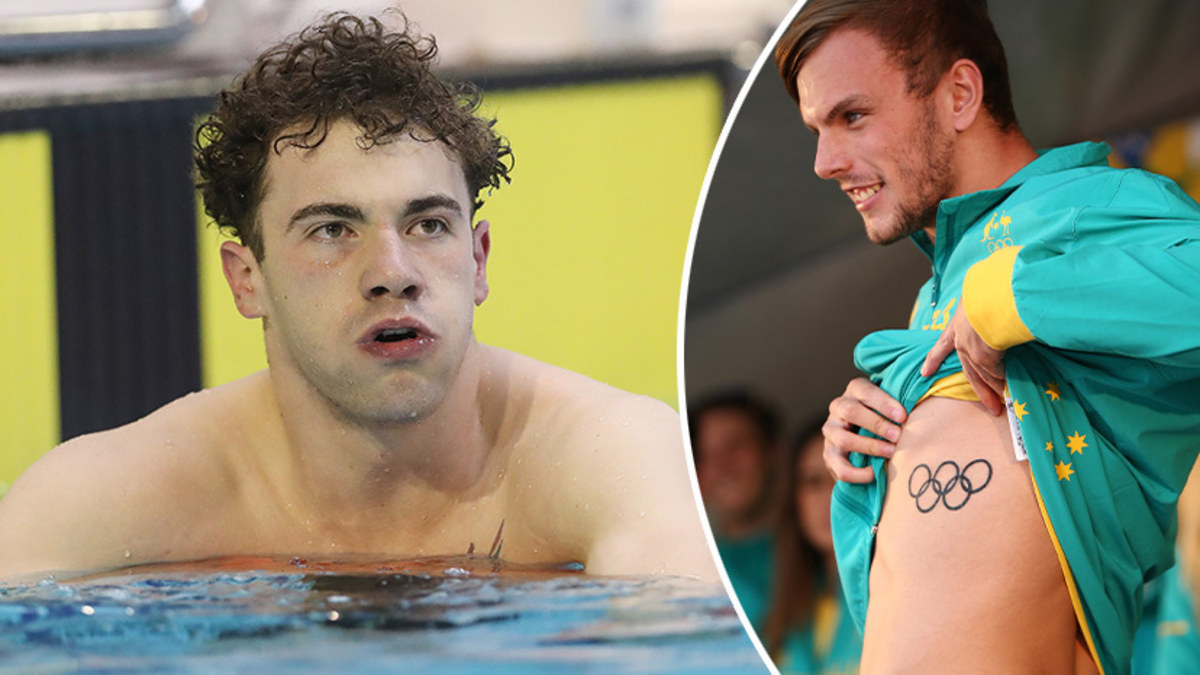

AmericanHistoryX
Well-known member
Just a big big thank YOU to Tiger One for great photos.
What a complete load of pedantic twaddle. I’m sure many of these officials gain some sort of sadistic pleasure in destroying the dreams of athletes who have worked so hard and given their whole lives to be in these moments all because of some bureaucratic BS. Obviously just jealous and wouldn’t know what it meant to train and work hard towards achieving a dream.An Olympic rings tattoo is a rite of passage. If a Paralympian gets one, they'll be disqualified

Last edited:
